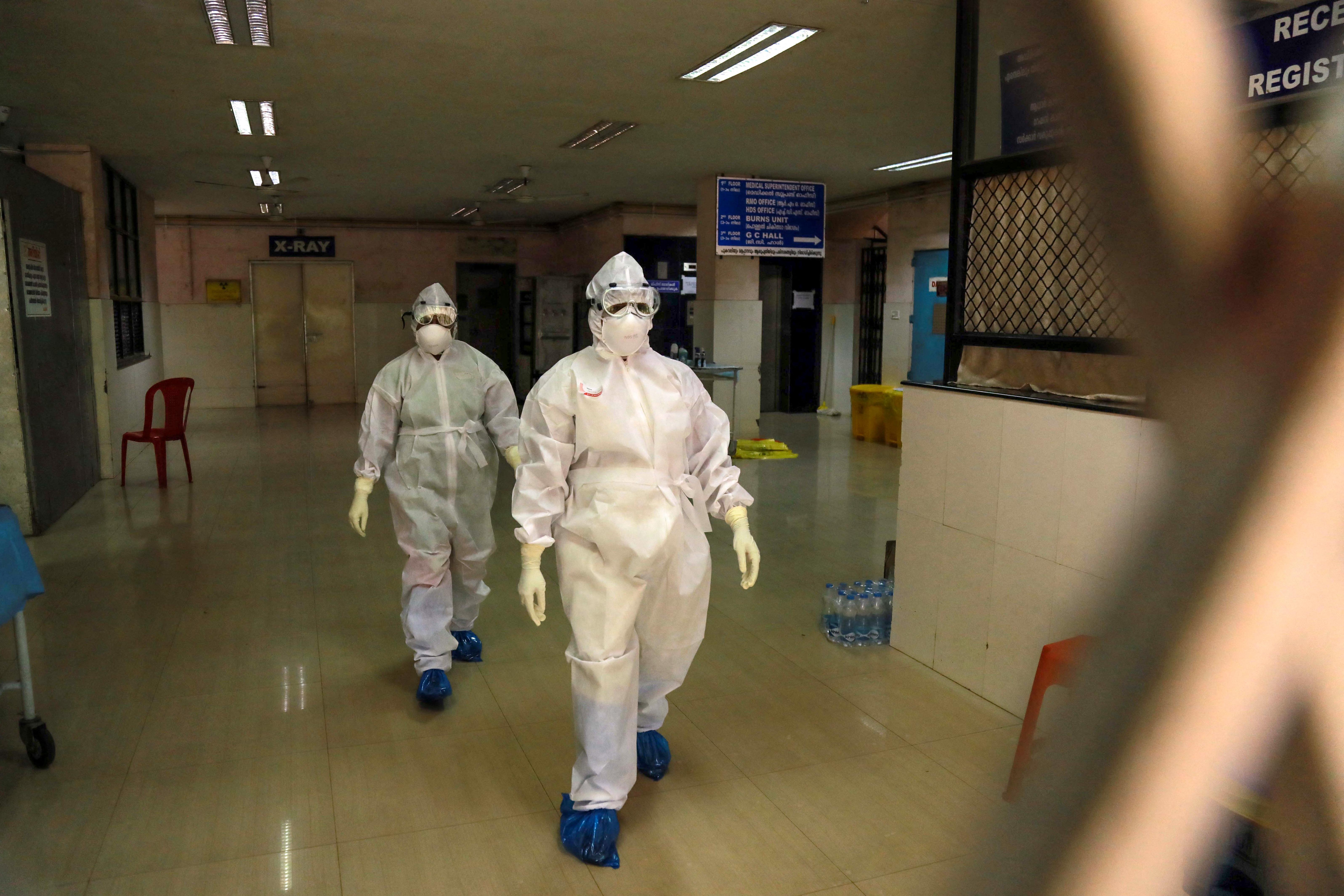 Health officials in full protective gear walk inside an isolation ward of Ernakulam Medical College in Kochi in the Indian southwestern state of Kerala on June 6, 2019. (PHOTO / AFP)
Health officials in full protective gear walk inside an isolation ward of Ernakulam Medical College in Kochi in the Indian southwestern state of Kerala on June 6, 2019. (PHOTO / AFP)
NEW DELHI - The southern Indian state of Kerala shut some schools, offices, and public transport on Wednesday in a race to stop the spread of the rare and deadly Nipah virus, which has killed two people.
Two adults and a child were still infected in the hospital, and more than 700 people were being tested for the virus, spread via contact with the bodily fluids of infected bats, pigs or people, a state health official said.
ALSO READ: India's Kerala shuts schools, banks to curb deadly Nipah virus
The state government on Wednesday evening said at least 706 people, including 153 health workers, were undergoing tests to check the spread of the virus. Results were awaited.
"More people could be tested ... Isolation facilities will be provided," Pinarayi Vijayan, chief minister of Kerala, said in a statement. He asked people to avoid public gatherings in the Kozhikode district for the next 10 days.
The first victim was a small landholder growing bananas and areca nuts in the Kozhikode village of Maruthonkara, said a government official who retraced the movement of that person to track down all people he could have interacted with and the places he visited before his health started to deteriorate
Two infected people have died since Aug. 30 in Kerala's fourth outbreak of the virus since 2018, forcing authorities to declare containment zones in at least eight Kozhikode villages.
"We are focusing on tracing contacts of infected persons early and isolating anyone with symptoms," state Health Minister Veena George told reporters.
READ MORE: ADB: Virus, inflation push 68m more in Asia to extreme poverty
She said the virus detected in Kerala was the same as one found earlier in Bangladesh, a strain that spreads from human to human with a high mortality rate but has a history of being less infectious.
"Public movement has been restricted in parts of the state to contain the medical crisis," she said, adding that state epidemiologists were using antivirals and monoclonal antibodies to treat three people infected, including a medical worker.
Strict isolation rules have been adopted, with medical staff being quarantined after contact with the infected.
The first victim was a small landholder growing bananas and areca nuts in the Kozhikode village of Maruthonkara, said a government official who retraced the movement of that person to track down all people he could have interacted with and the places he visited before his health started to deteriorate.
READ MORE: US CDC tracks new lineage of virus that causes COVID
The victim's daughter and brother-in-law, both infected, are in an isolation ward, while other family members and neighbors are being tested.
The second death followed contact in hospital with the first victim, an initial investigation has shown, but the two were not related, added the official, who sought anonymity as he was not authorized to talk to the media.
The Nipah virus was first identified in 1999 during an outbreak of illness among pig farmers and others in close contact with the animals in Malaysia and Singapore.
READ MORE: 50 kids taken ill in India after chameleon found in school meal
Outbreaks are sporadic and previous infections in South Asia have occurred when people drank date palm sap contaminated with bat excreta.
The first victim's native village, Maruthonkara, is situated near a 300-acre forest that is home to several bat species. During the 2018 Nipah outbreak, fruit bats from the same area tested positive for the virus.
In Kerala's first Nipah outbreak, 21 of the 23 people infected died. Outbreaks in 2019 and 2021 killed two people.
Neighboring Tamil Nadu state announced that travelers coming from Kerala would be subjected to medical tests and those with flu symptoms would be isolated.
A Reuters investigation in May identified parts of Kerala as among the places most at risk globally for outbreaks of bat viruses, especially as extensive deforestation and urbanization have brought people and wildlife into closer contact.


